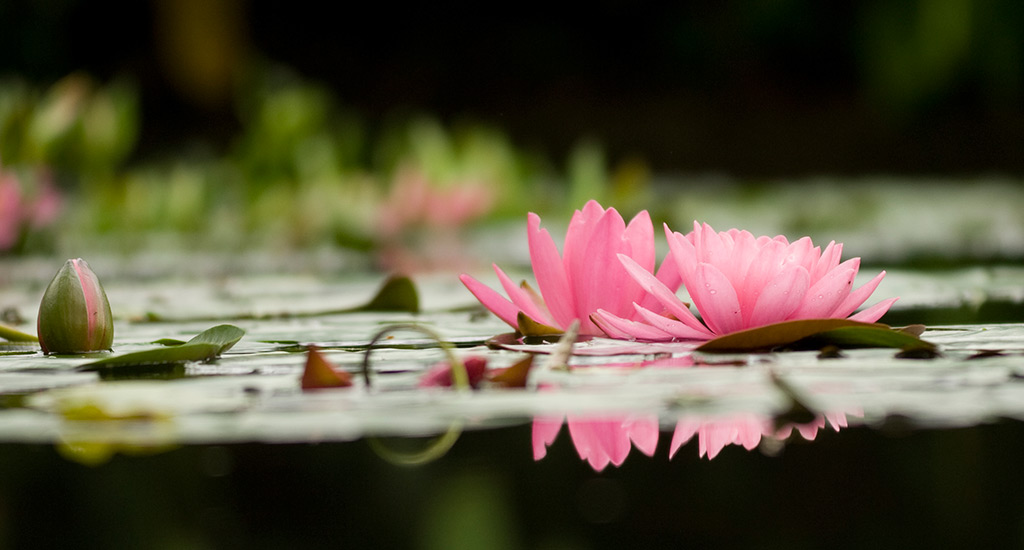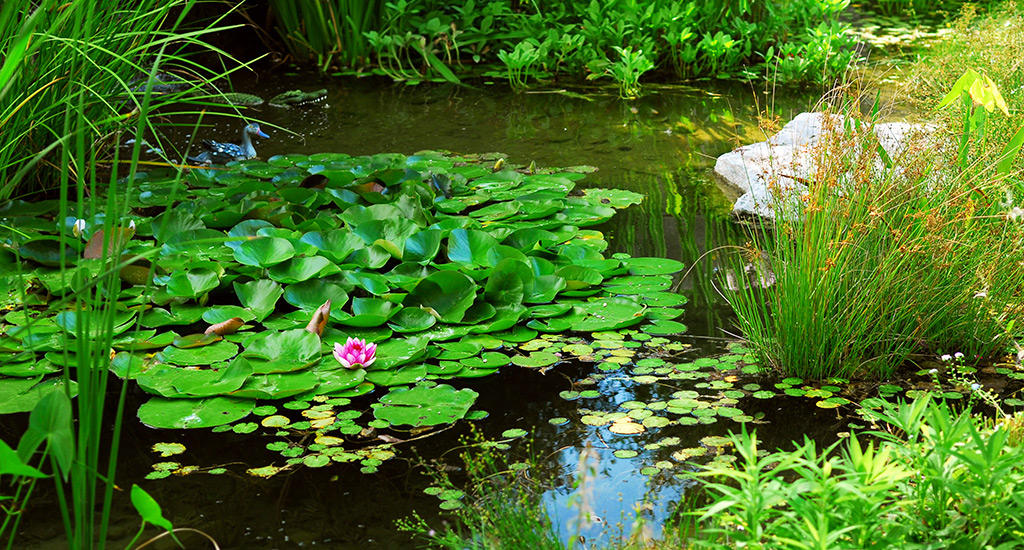Aquatic Plants

Aquatic Plants Bring Color to Your Pond
Aquatic plants are much more than exotic looking additions to your water feature. These hard-working beauties play several key roles in a pond. In addition to controlling algae growth, aquatic plants provide shade, food, and protection for fish. Typically, aquatic plants are grouped into 4 varieties: water lilies, marginals, floating plants, and submerged plants.
Plan ahead: Some varieties of aquatic plants need to spend the winter indoors, so remember to have planting pockets built into your pond. Planting pockets will allow you to place a potted plant in the pocket and use rocks to hide the pot. When the weather turns colder, the potted plants can be easily removed from the pockets.
Water Lilies
Hardy species of water lilies are reliably perennial from the northern reaches of the U.S. Department of Agriculture’s Zone 3 to the subtropical areas of Zone 11. White, pink, red, or yellow flowers float directly on the water and are open during the day. Do remove any spent foliage before winter. New leaves will emerge in the spring.
Tropical water lilies are hardy in USDA Zones 10 and 11, but can be planted in colder zones when the water temperature is consistently above 70 degrees F. Flowers are often fragrant and some varieties bloom at night.
Fertilizing water lilies will encourage a greater number of larger flowers. Time-released granular fertilizer mixed into the soil at the bottom of the pot or planting pocket is a great way to fertilize at planting time. If you don’t have that option, consider using lily fertilizer tablets.
Marginal Aquatics
These plants grace the edges of a water garden. They help filter the water and remove elements that would otherwise feed algae.
In a rock and gravel pond, marginals are usually placed directly in the gravel. This allows the plants to thrive naturally and provide optimal filtration. Tropical varieties that need to overwinter indoors should be left in pots to facilitate removal.
Floating Aquatics
These aptly-named plants float at the surface while their roots hang into the water. Most floating aquatics are tropical, but some are hardy perennials in climates with hard winter freezes. Hyacinth (NOT the garden variety bulb!) and water lettuce are good choices to disguise the top of the BioFalls filter.
Aquatics
Submerged aquatics are commonly called oxygenators, but this is a misnomer. These plants do produce oxygen during the day, but at night and on cloudy days, they use oxygen and produce carbon dioxide. Submerged aquatics are efficient at using nutrients in the water and are good hiding places for fish.

